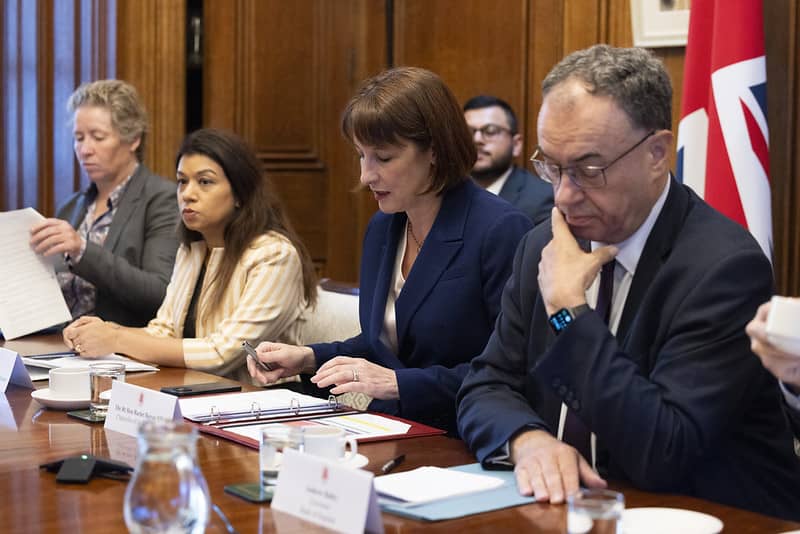The Bank of England Will Have to Throttle Back on Rate Cuts
- Written by: Gary Howes

Above: File image of Chancellor Rachel Reeves, with the Governor of the Bank of England Andrew Bailey. Picture by Kirsty O'Connor / Treasury.
Looser fiscal policy begets tighter monetary policy.
This is the rule that will guide the Bank of England's upcoming interest rate decisions and ultimately means rates won't fall as far as previously expected.
Markets now anticipate the Bank of England to hold interest rates at higher levels for longer in the wake of the budget that saw a significant increase in spending (looser fiscal policy) of £70BN per year over the next five years.
"If we zoom out and look at the wider picture on the public finances, it is abundantly clear that this Budget has loosened fiscal policy - the government will be borrowing more than the OBR’s projections suggested in March," says Philip Shaw, an economist at Investec.
Additional spending means greater demand in the economy, which pushes up the cost of goods. "The OBR's assessment was that the loosening in fiscal policy would result in a modest increase in inflation for a while and interest rates would be around 25bps higher," explains Shaw.
The OBR estimates that the Budget measures will increase inflation by 0.4 percentage points at their peak effect in 2026.
The Bank of England's job is to bring inflation back to 2.0%, meaning it would have to reconsider the pace at which it cuts rates (tighter monetary policy).
"The combination of stronger growth and inflation will curtail room for the BoE to keep cutting rates in the year ahead. We are now less confident that the BoE will deliver back-to-back rate cuts in November and December," says Lee Hardman, FX analyst at MUFG Bank Ltd.
"Additional fiscal stimulus potentially stifles the Bank of England's easing cycle at the front-end," says Sam Hill, an analyst at Lloyds Bank.
The net result of a higher-for-longer strategy would be higher borrowing costs, which is why mortgage rates could rise again in the wake of the budget.
Higher rates can also support the Pound; however, the currency has fallen amidst a recalibration in interest rate expectations. This suggests the positive correlation between rates and the currency might be on hold for now.
Nevertheless, MUFG's Hardman thinks the correlation can be maintained going forward and that the pullback in Sterling could be temporary.
"Higher yields for longer should help to maintain a stronger pound," says Hardman.



